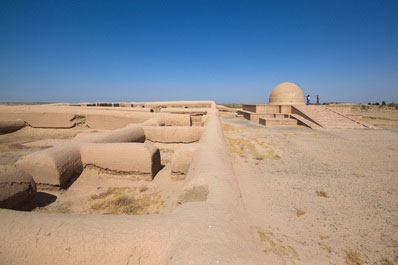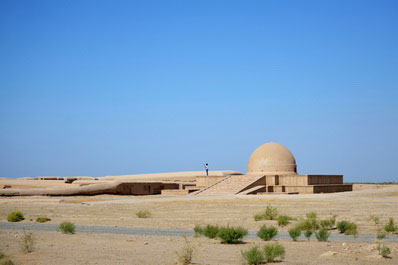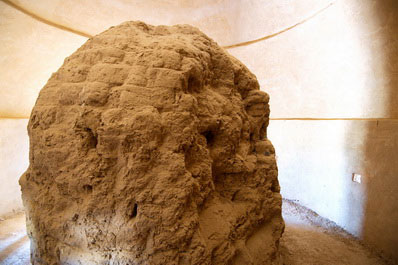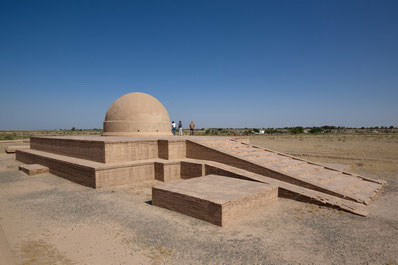Buddhist temple complex of Fayaz Tepe, Termez
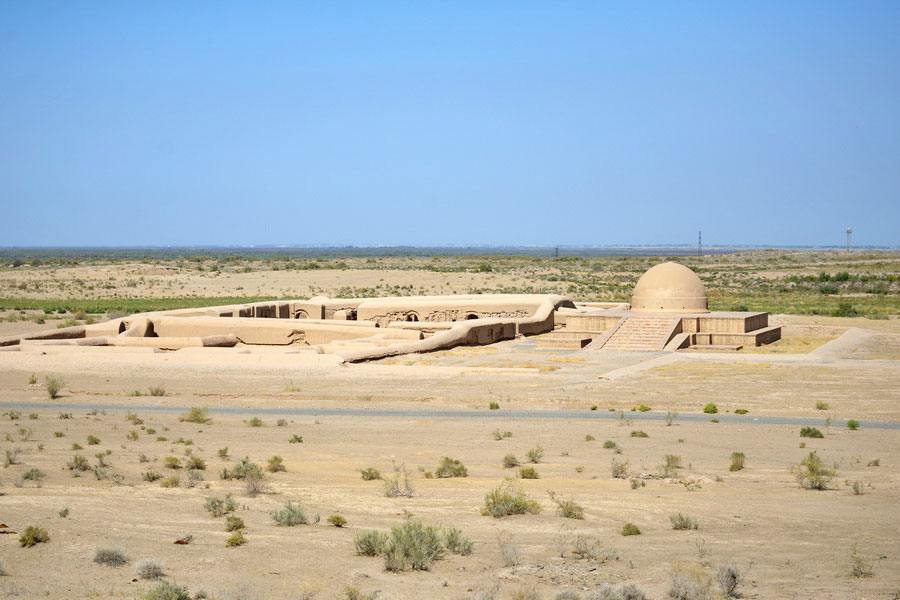
Fayaz Tepe is one of Central Asia’s largest Buddhist sites, flourishing in the I-III centuries AD. This temple complex includes a monastery, stupa, and temple, reflecting Kushan-era architecture and serving as a key pilgrimage center on the Great Silk Road.
History
Buddhism reached Central Asia from India around two thousand years ago, marking the beginning of a new era of cultural and spiritual flourishing in the region. A key figure in this process was the Kushan king Kanishka I (103–125 CE), known as a great patron of Buddhism and the driving force behind the large-scale construction of temples and monasteries. However, with the advent of Islam, Buddhist influence began to decline, and its followers faced increasing persecution. Buddhist sites such as Fayaz Tepe became focal points of religious conflict: many were destroyed, plundered, or left to ruin. Today, only monumental remnants remain - silent witnesses to the grandeur of these once-sacred spaces.
Architecture
The Fayaz Tepe complex comprises three main architectural groups: a temple, a monastery, and service quarters including a refectory. Each section features an inner courtyard surrounded by rooms. Along the walls of the halls are the remains of ancient columns that once supported lofty ceilings. Arched vaults, another notable feature, are considered a hallmark of early-era architecture in the region. The inner temple walls were adorned with vivid frescoes portraying scenes from the life of Buddha and rich in Buddhist iconography. Set apart from the central ensemble, a stupa - the oldest part of the site, dating to the I century - stands on a raised platform.
Finds
Excavations at Fayaz Tepe have uncovered remarkable artifacts that shed light on the vibrant spiritual life of the Buddhist community in ancient Termez. Among the most striking are terracotta statues and fragments of preserved wall paintings. Notable discoveries include a niche featuring a Buddha figure flanked by two monks in prayer, and a life-sized statue of the Enlightened One.
Archaeologists also unearthed numerous ceramic fragments inscribed in the Bactrian language, a plaster bas-relief with a solar motif, a carved stone bowl decorated with lotus petals, and various domestic and ritual objects. All major finds from Fayaz Tepe are preserved in the Museum of Uzbek History in Tashkent.
Today, Fayaz Tepe stands as both a significant research site and a destination for visitors. The objects uncovered there offer invaluable insight into the cultural legacy of Termez, while the monument itself is protected as part of Uzbekistan’s national heritage. Visiting this Buddhist complex provides a rare chance to step back into the ancient past and explore the early religious history of the region.


